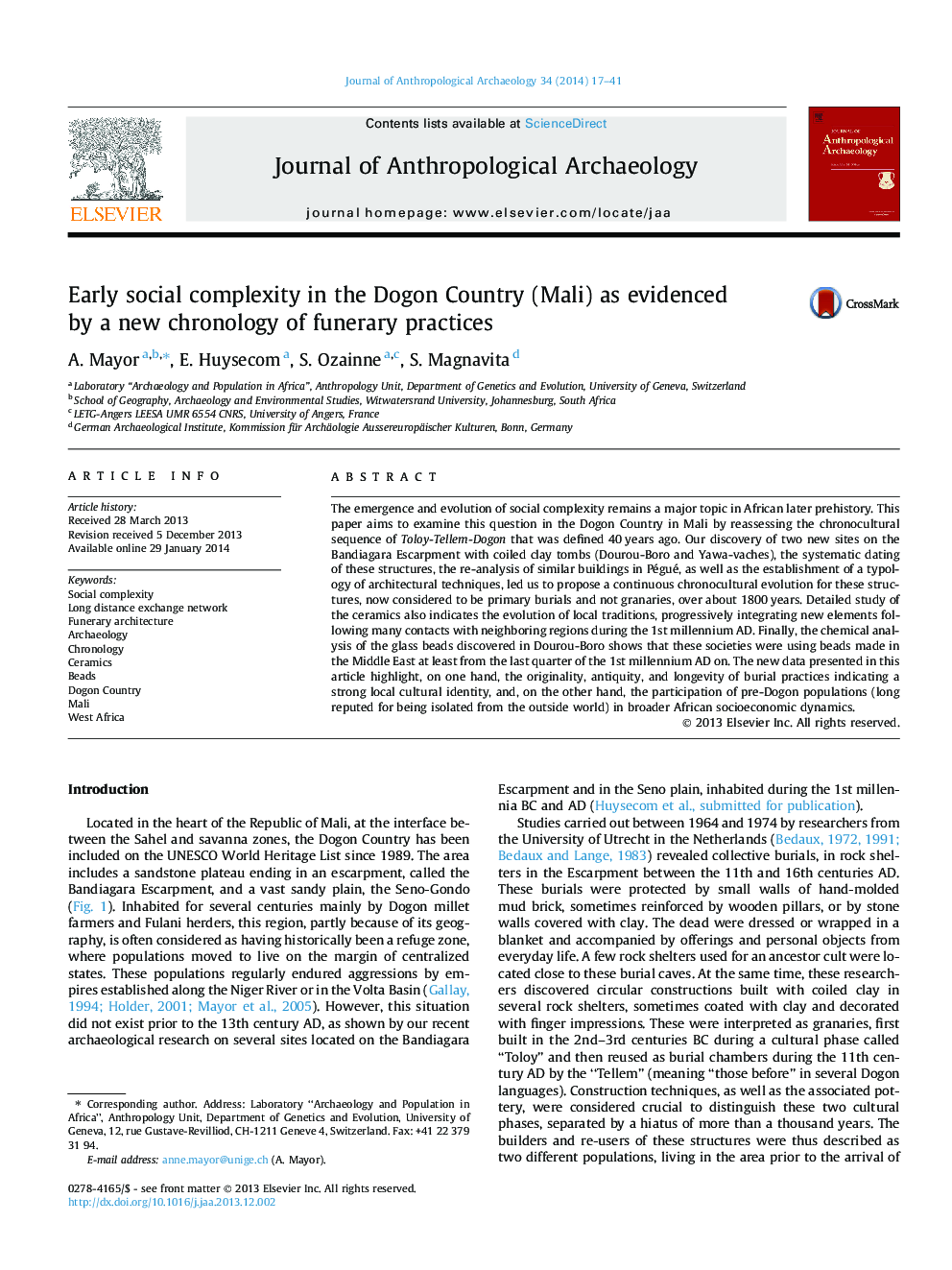| کد مقاله | کد نشریه | سال انتشار | مقاله انگلیسی | نسخه تمام متن |
|---|---|---|---|---|
| 1034916 | 1483856 | 2014 | 25 صفحه PDF | دانلود رایگان |
• This paper highlights mortuary sites as loci for understanding social complexity.
• It reassesses the chronocultural sequence «Toloy-Tellem-Dogon» in Mali.
• We demonstrate an evolution of architecture of coiled clay tombs over 1800 years.
• Pottery shows progressive integration of foreign elements during the 1st mill. AD.
• Chemical analysis of glass beads indicate Asian workshops and long distance trade.
The emergence and evolution of social complexity remains a major topic in African later prehistory. This paper aims to examine this question in the Dogon Country in Mali by reassessing the chronocultural sequence of Toloy-Tellem-Dogon that was defined 40 years ago. Our discovery of two new sites on the Bandiagara Escarpment with coiled clay tombs (Dourou-Boro and Yawa-vaches), the systematic dating of these structures, the re-analysis of similar buildings in Pégué, as well as the establishment of a typology of architectural techniques, led us to propose a continuous chronocultural evolution for these structures, now considered to be primary burials and not granaries, over about 1800 years. Detailed study of the ceramics also indicates the evolution of local traditions, progressively integrating new elements following many contacts with neighboring regions during the 1st millennium AD. Finally, the chemical analysis of the glass beads discovered in Dourou-Boro shows that these societies were using beads made in the Middle East at least from the last quarter of the 1st millennium AD on. The new data presented in this article highlight, on one hand, the originality, antiquity, and longevity of burial practices indicating a strong local cultural identity, and, on the other hand, the participation of pre-Dogon populations (long reputed for being isolated from the outside world) in broader African socioeconomic dynamics.
Journal: Journal of Anthropological Archaeology - Volume 34, June 2014, Pages 17–41
